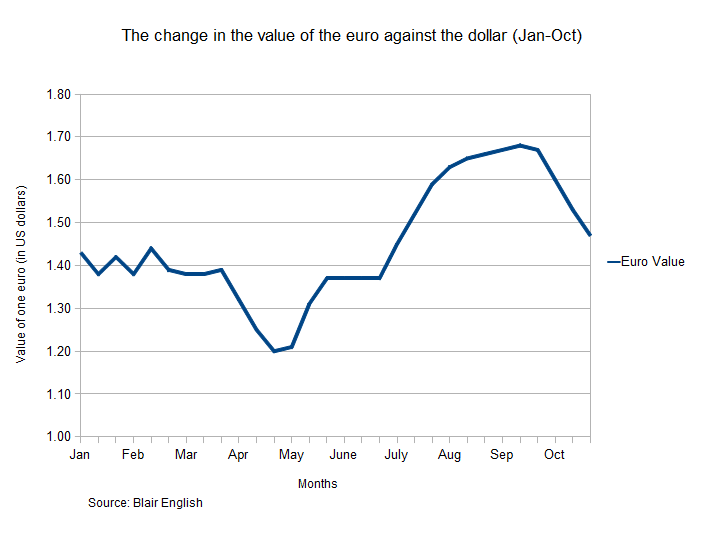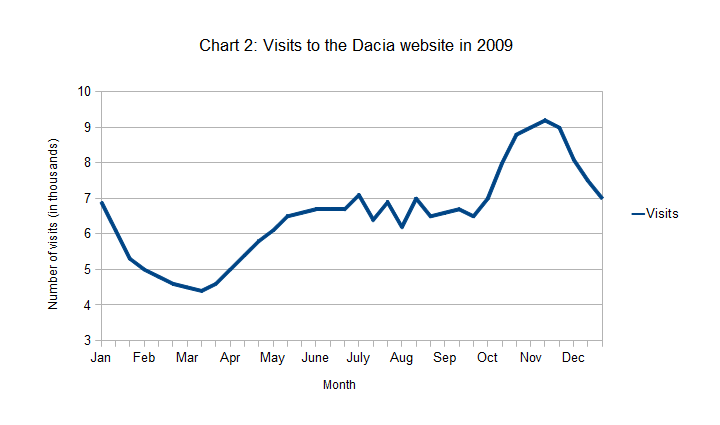Vocabulary for describing trends exercise part 3
In the last two exercises on describing trends, we looked at the different ways to describe increases and decreases in graphs/charts (e.g. rise, fall sharply etc..). It is important to know this, but if you want to sound more fluent when describing changes in graphs/charts, you need to know more advanced vocabulary.
In this online exercise on describing trends and changes in graphs/charts in English, we will look at more advanced vocabulary that is commonly used in both business and professional English.
Click here to go to the second part of this 'Vocabulary for describing trends exercise'
Exercise: Describing changes in a chart in a business presentation
Read the following presentation by an analyst about the changes in the value of the euro against the US dollar. Focus on how the analyst describes the changes in its value and how they compare to the data/information in the chart below.
Using both the context and the chart, try to guess what the meaning of the words/phrases in bold are. Then do the quiz at the end to check if you are right.

Analyst:'This chart shows the changes in the value of the euro against the US dollar between January and October of 2010.
As you can see, in January and February the value of one euro fluctuated between $1.38 and $1.45. By March, this fluctuation stopped and the value settled down. During the month of April, the value of the euro plunged. It reached its lowest point of $1.20 at the end of April. During May, the value of the euro recovered. Slightly at first, but then more sharply between the middle and the end of the month.
Throughout the month of June, the value of the euro remained constant at a value of $1.37. But this changed in July, when the value soared from $1.37 to $1.66 due to fears about the level of US government debt. In August, this dramatic rise levelled off. This levelling off continued into the month of September, where the euro's value peaked at $1.68. But during October the value fell back, finishing the month with a value of $1.47.'
Quiz:
Using one of the words/phrases in bold from the above text, choose the word(s) from the question's selection box so that the sentence matches with the data in the below chart for the number of monthly visits to the Dacia website. Only use one word/phrase once and write it as it is in the text. Click on the "Check" button at the bottom of the quiz to check your answers.
When the answer is correct, two icons will appear next to the answer. The  icon contains extra information about the word/phrase. In the
icon contains extra information about the word/phrase. In the  icon, you can listen to the pronunciation of the word/phrase.
icon, you can listen to the pronunciation of the word/phrase.

Practice
Now that you understand the new vocabulary, practise it by creating your own sentences with the new words/phrases.


Follow us on